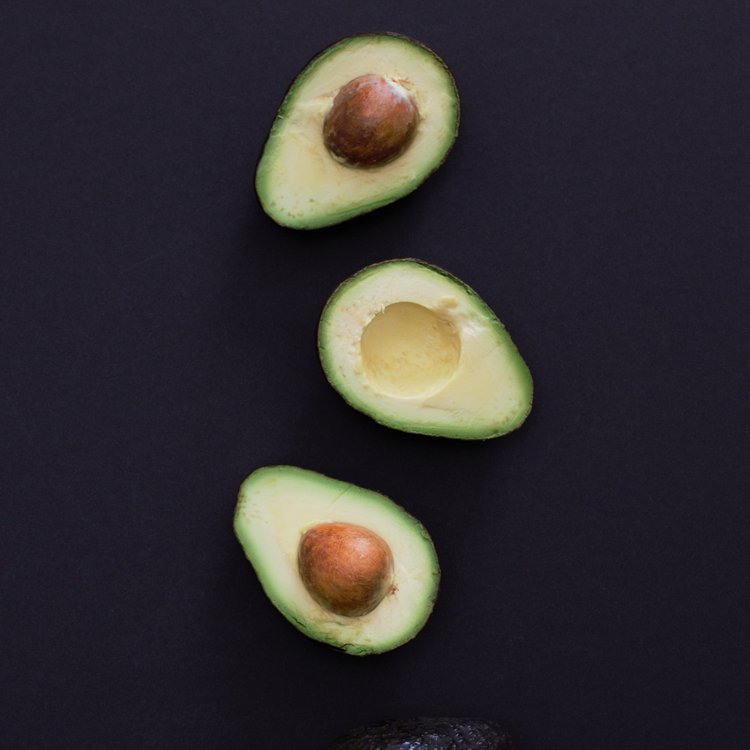On a keto or low-carb high-fat diet, fat is your best friend. It is your primary energy source that allows your body to enter and maintain ketosis and covers 65-85% of your daily macros. However, this doesn’t mean you can just pick whatever type of fat you like.
It is actually the same as in real life: you have the good guys and you have the bad guys. Therefore, it is very important to pick food products with the right type of fats, that will make you a happier, healthier person. From a Dietitian’s perspective, I will give you a brief overview of the different types of fats; which types of fat should you include in your circle of friends, and which types of fat are not worth your attention.
Why we need fat in our lives
Fat is one of the macronutrients and plays different important roles in your body, besides providing steady long-lasting energy. Did you know that consuming enough fat helps you to absorb the fat-soluble vitamins A, D, E & K?
In addition, it supports the making of hormones, helps regulate inflammation and immunity, improve cholesterol levels, and maintains bone density. It's also essential to maintain the health of our body cell, and repairs damaged tissues. I explicitly name the word ‘essential’, since your body cannot produce fats without help from other friends! These friends are, as you may guess, the fatty food products we love to eat on keto. Oh, and did I already mention that fats help you feel satisfied for longer, and enriches your meals in such a way almost everything tastes heavenly?
The 4 types of fats: not all fats are equal, and are your friends
Unfortunately, not all 4 types of fat provide above-mentioned benefits. So what are the 4 main types of fat, and why are some of them good for you, and some not? Let’s break it down for you! Before that, it is important to have a good understanding of the basic structure of a fat molecule. I know, the chemistry part may be a really fun part for most of you, so I will keep it short, and visual.
Fats that occur in foods come in triglyceride form, which is created by one glycerol and 3 fatty acids (see picture below). If you consume fatty food products, your body breaks down the triglyceride into individual fatty acids and glycerol.

The differences between the types of fat come from the number of bonds between the carbons (C) in the fatty acids, as well as from the length of these chains.
Fatty-acid chains occur in 3 different lengths:
- Short-chain fatty triglycerides consist of 5 or fewer carbons. You find them in small amounts in butter and cream.
- Medium-chain triglycerides (also known as MCTs) have 6-12 carbons. Find these types in coconut oil, MCT oil, and butter.
- Long-chain fatty triglycerides consist of 13 or more carbons. The majority of food products consist mainly of long-chain fatty acids. Find them in meat, poultry, fish, dairy, nuts, seeds, avocado, and olives.
Now, after freshen up your chemistry knowledge, it’s time to introduce you to the 4 main types of fat!
Saturated fats: the bad guys for no reason
The saturated fats only have single bonds between the carbons in their chains. That’s where the name comes from! We have always been taught that saturated fats are our enemies and that they increase the risk of developing heart diseases. Studies that claim this, lack scientific significant evidence. Saturated fats that naturally occur in foods actually play a key role in different processes to obtain cardiovascular health, strong bones, and a strong immune system. Saturated fats are your friend, as long as they come in their natural habitats such as in heavy cream, grass-fed butter, MCT oil, ghee, coconut oil, cheese, and lard. No need to fear these :)
The opposite of saturated fats, the unsaturated fats, come in 2 types: the monounsaturated fatty acids, and the polyunsaturated fatty acids. Try to remember the following: the first fellows prefer to be alone, therefore the name mono-, and have only one double bond between carbons in their chains. Polyunsaturated fatty acids like to share their life, therefore they have more than one double bond between carbons in their chains.
Monounsaturated fatty acids: why you want to become friends with them
Monounsaturated fatty acids belong to your best friends! Their health benefits are endless and include controlled blood pressure, increased HDL cholesterol (HDL is the good guy of cholesterols), protection from skin photoaging, and reduced abdominal fat.
You can find monounsaturated fats mostly in plant-based products like olives & extra virgin olive oil, avocados and avocado oil, macadamia oil, and nuts.
Polyunsaturated fatty acids: pick wisely
Polyunsaturated fatty acids don’t like to be alone, and even have 2 families: the omega-3 and omega-6 fatty acids, which you are probably familiar with. Pick wisely, and spend more time with the omega-3 family. These long-chain fats have evidence-based health benefits, such as improved risk factors of developing heart disease factors, anti-inflammatory properties, improved brain health, and reduced symptoms of metabolic syndrome. The most important omega-3 fats are EPA and DHA, found in fatty fish, chia seeds, fish oil, flax seeds, eggs, and grass-fed meat.
So, it is time to expand your circle of friends, since both types of fat are healthy fats, yay! But, only when these types come from natural sources. You may have heard of vegetable oil before, a highly-processed form of omega-6. Where Omega-3 may help to decrease inflammation, omega-6 may increase it. Due to reliance on processed food products, Western diets nowadays contain more than 15 times as much omega-6 as omega-3. The aim is to have a ratio of 1:1!
Trans fatty acids: not worth your attention, unless…
Mostly, we say: best for last, but in this article that is not the case! The majority of trans fatty acids don’t belong to your circle of friends, and I will explain why. This type of fat mostly comes in highly-processed form due to the chemical process of hydrogenation. Polyunsaturated oils undergo this process so they don’t become rancid, and then get the name “partially hydrogenated oils." Please run far away from products with this ingredient! Processed foods as fast foods, margarine, and commercially baked products consist mainly of these trans fatty acids. These bad guys are associated with long-term health risks such as obesity, depression, breast cancer, and coronary heart diseases. Don’t mistake them for the saturated fats!
There’s one exception. Trans fatty acids that naturally occur in small amounts in food. I am talking about dairy fat and grass-fed animal products. There’s no need to worry about consuming these types of foods.
The difference in molecule structure = difference in absorption
The difference in molecule structure also affects the way your body absorbs the types of fat. For example, saturated and unsaturated long-chain fatty acids are absorbed into the bloodstream, in a package with cholesterol, and proteins. Then, your body transports them further so they can provide energy or can be stored as body fat. However, your body absorbs short-chain and medium-chain fatty acids in a different way. These types of fats are a bit more impatient and skip transportation through your bloodstream, and go directly to your liver. Your liver converts these into ketones for quick energy fuel, and less likely stores them as fat. MCT-oil is a great example that gives your body an opportunity to produce ketone bodies quickly as energy fuel. No wonder keto-ers love to add this type of oil to their diets. Most oils actually consist of a combination of short, medium and long-chain fatty acids.
The most important question: which types of fat are your best friends on a keto diet?
Your best friends on a keto diet are saturated fats, the monounsaturated fats, and the polyunsaturated fats (in particular omega 3) that naturally occur in food products.
- Saturated fatty foods in their natural habitat like heavy cream, grass-fed butter, MCT oil, ghee, coconut oil, cheese, and lard.
- Monounsaturated fatty foods like olives & extra virgin olive oil, avocados and avocado oil, macadamia oil, and nuts.
- Polyunsaturated fatty foods like fatty fish, chia seeds, fish oil, flax seeds, eggs, and grass-fed meat.
Avoid processed polyunsaturated fats and trans fats that occur in vegetable oils, margarine, and commercially baked products. Instead, eat plenty of products with omega-3. Another take-home message is that there’s no need to fear saturated fats that naturally occur in food. Don’t be shy to include them in your circle of friends!
Do keep in mind that most food products don’t consist of 100% saturated, 100% monounsaturated, or 100% polyunsaturated fats. Most foods are a combination of these different types of fat. One exception is MCT oil. This medium-chain triglyceride-oil is a great source that provides your body with quick energy. However, don’t only embrace this type of fat, vary with the different sources of healthy fats, divide your attention, and balance your intake of omega-6 and omega-3. This, to provide your body with a wide range of nutrients. The total amount of fat you consume daily depends on whether you want to lose or maintain weight.
Keto is not a free pass to eat excessive amounts of butter, bacon, and mayonnaise. Because, after all, the main goal of a keto lifestyle is to maintain the right fat-protein-carb ratio with a well-balanced diet that improves your overall health.
Note to this article
Every individual is unique, and so are diets and nutritional needs. There’s no 1-size-fits-all approach when it comes to a healthy diet or lifestyle. This depends on different factors such as your goals, genetics, medical history & conditions, medications, and physical activity. A rigorous lifestyle change should always be addressed to your health professional. Are you curious if a keto lifestyle could be beneficial to your health, but do you have no idea how to get started? Please don’t hesitate to get in contact with me or another qualified low-carb Dietitian to examine this, and create a personalized plan to guide you through the world of keto!
Article written by Lotte Damen
Other blogs you might enjoy:




2 comments
Funky Fat Foods
Hello Cindy! Thank you for the article! It was a very interesting read and we couldn’t agree more. The truth is, we do need fats in our diets so that’s why it’s important to know the difference between the good and the bad fats as well as, to know how to find a good balance when incorporating them into our diets.
Cindy
Thank you for bringing some recognition to this! A lot of people are confused as to what is good fats and unhealthy fats/ I was doing some reading and also came across another great read worth looking into, https://www.ez.insure/landing/2021/10/its-time-to-get-the-skinny-on-fats/ . I would love to hear your thoughts on it!
Leave a comment
All comments are moderated before being published.
This site is protected by hCaptcha and the hCaptcha Privacy Policy and Terms of Service apply.